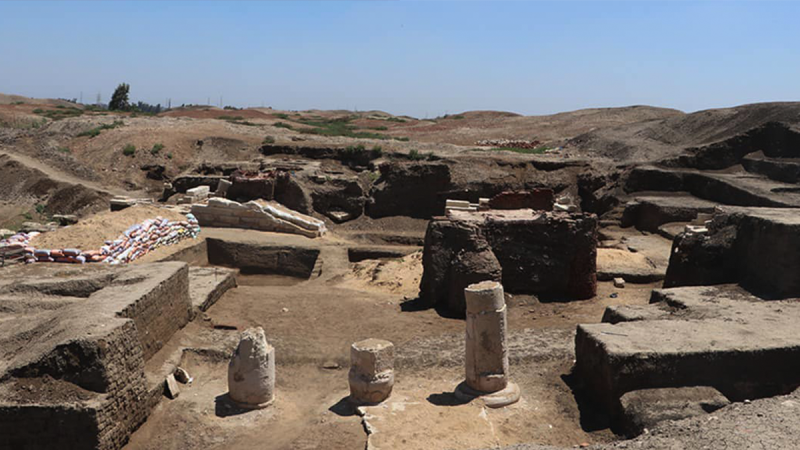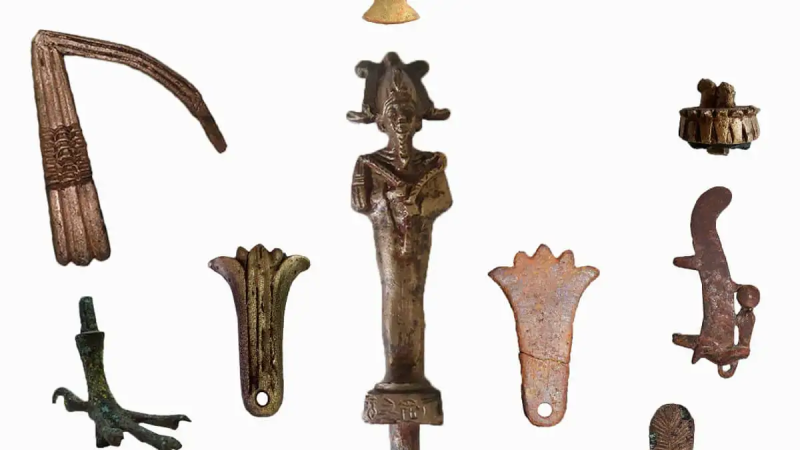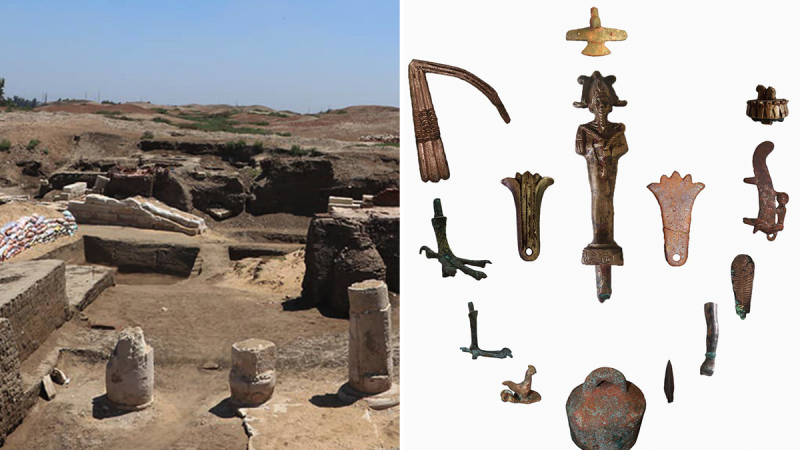Astronomical observatory uncovered in Egypt dating back to 6th century BC: 'Significant'
Archaeologists have uncovered the first and largest astronomical observatory from 6th century BC — located in Kafr Sheikh, Egypt.
The Egyptian Ministry of Tourism and Antiquities shared the remarkable discovery on Facebook on Aug. 23 along with photos of various artifacts found during the excavation.
"The Egyptian archaeological mission from the Supreme Council of Antiquities, working at the Buto Temple in Tell el-Faraeen area in Kafr El-Sheikh, has successfully uncovered the first and largest mud brick astronomical observatory, dating back to the 6th century BCE," the group wrote.
WWII-ERA BOMB DISCOVERED BY COLORADO CONSTRUCTION WORKERS
The observatory covers about half a mile.
It was used to observe and record astronomical findings, tracking the movement of the sun and stars in the temple in the city, according to the post.

Egyptian archaeologists discovered the "first and largest" mud brick astronomical observatory working at the Buto Temple in Tell el-Faraeen area. (Egyptian Ministry of Tourism and Antiquities)
"Its architectural design consists of a side entrance East where the sun rises, a hall of central columns open in the shape of the letter (L) and is fronted by a huge, high brick wall that leans inward, similar to the Egyptian style of calligraphy known in temple entrances," said the post.
For more Lifestyle articles, visit www.foxnews.com/lifestyle
The building is thought to measure sun inclination and shade and monitor sun movement hourly during the day.
It consists of about 15 feet-long limestone tiles, with five level blocks of limestone, three vertical and two horizontal blocks.

Archeologists found prominent time-measuring tools while discovering a large observatory in Egypt. (Egyptian Ministry of Tourism and Antiquities )
Archeologists found an inclined stone sundial, known as "the inclined shadow clock," which the Ministry of Tourism and Antiquities calls "one of the most prominent timekeeping instruments in ancient times."
The mission found five mud brick chambers likely used to store sophisticated tools, four additional small rooms, a large yellow-decorated hall with scenery and the remains of a blue painting.
CLICK HERE TO SIGN UP FOR OUR LIFESTYLE NEWSLETTER
There are "remains of a drawing of the Falcon's head Horus and the eye of the Ojat, which embody the systems of the universe and are associated with the Sun, the moon, the idol Horus, the idol and Ajit, the most important idols of Puto," said the post.

The Egyptian Ministry of Tourism and Antiquities said on Facebook that archeologists uncovered the "first and largest" mud brick astronomical observatory. (Egyptian Ministry of Tourism and Antiquities)
Prominent time-measuring devices, statues of idols, and pottery artifacts were also discovered during the excavation.
Fox News Digital reached out to the Egyptian Ministry of Tourism and Antiquities for additional comment.
CLICK HERE TO GET THE FOX NEWS APP
"The Egyptians were among the most adept astronomers in ancient history, and their legacy echoes to this day," noted Science Alert in relation to the new findings.
"It was in Ancient Egypt that the 365-day calendar was born, and the 24-hour day. They completely mapped the night sky, and had their own constellations and zodiac, some signs of which are still recognized today."
The discovery of the observatory "is a significant contribution" to an understanding today of Ancient Egyptian astronomy and scientific practices, noted Ancient-Origins.net.
Disclaimer: The copyright of this article belongs to the original author. Reposting this article is solely for the purpose of information dissemination and does not constitute any investment advice. If there is any infringement, please contact us immediately. We will make corrections or deletions as necessary. Thank you.







